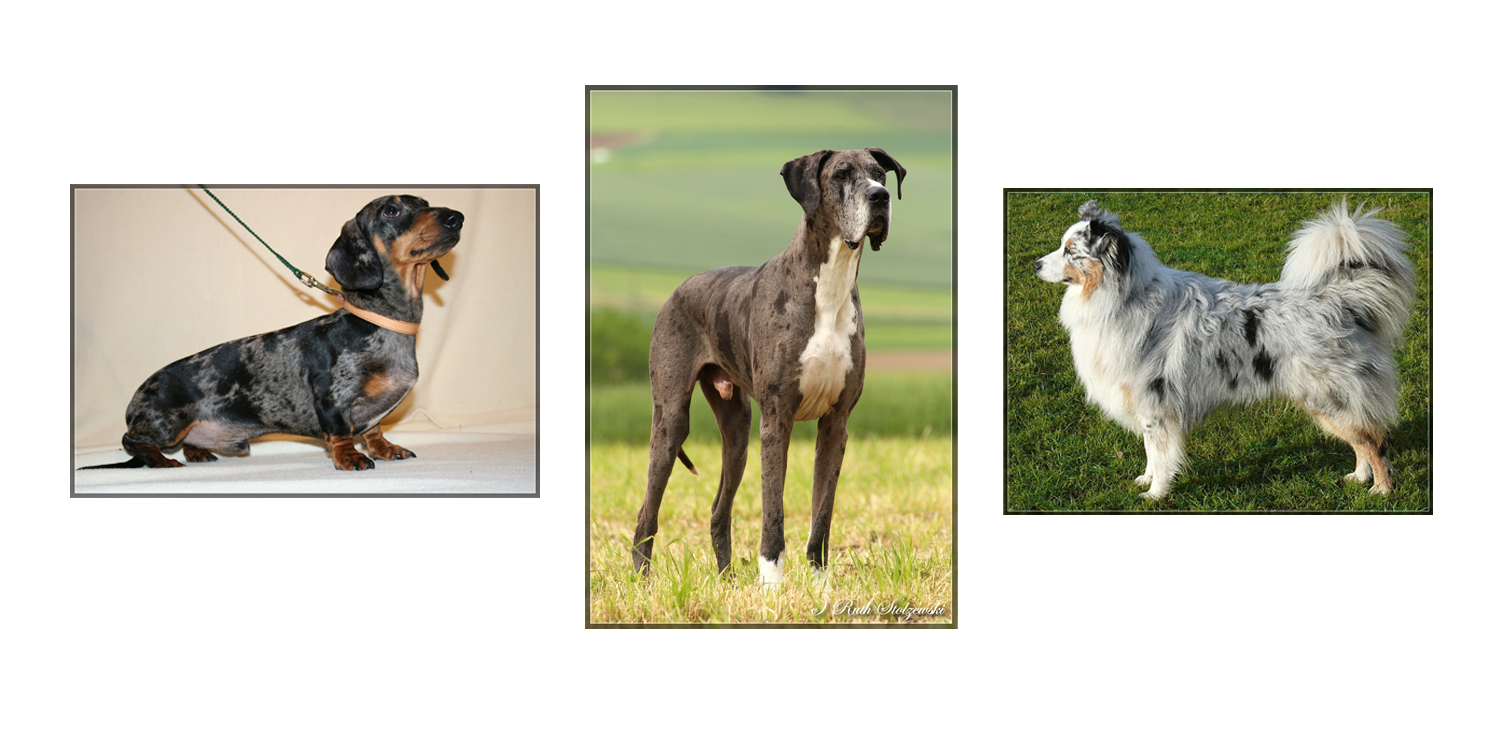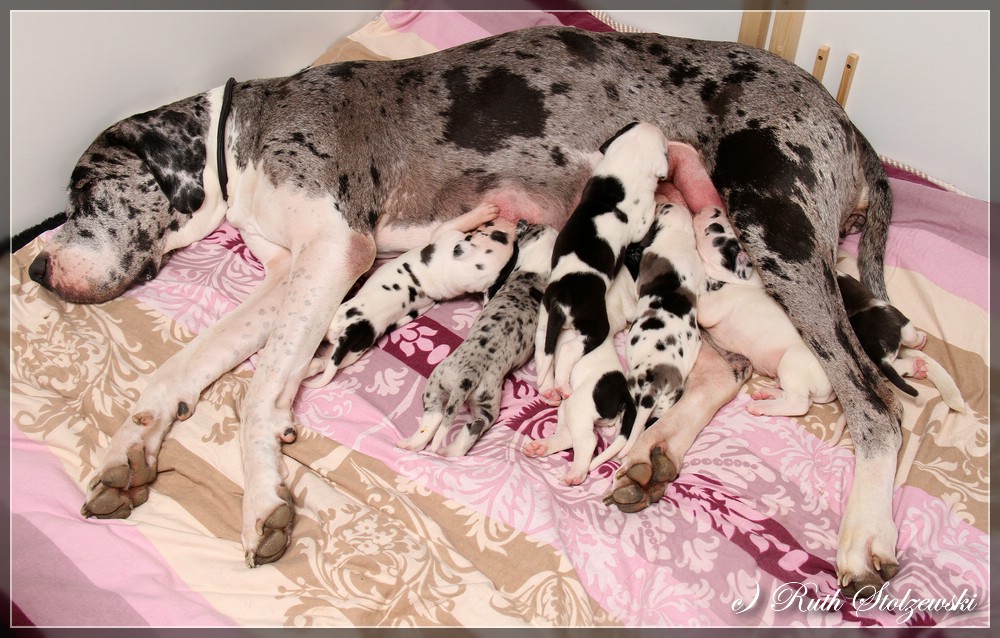The term “merle” describes on one hand a gene and on the other hand a specific coat color in dogs. Merle great danes are spotted danes which don’t have a white basic color but a grey one. In German they are called “Grautiger”. This color also appears in other breeds like the dachshund, the Australian Sheperd, the Beauceron and many more and is called “blue merle” then. It is caused by the merle gene, which produces splashed patches on a lighter color. Every basic color can be affected by the merle gene, there exist for example also “red merles” or “porcelain harles”.

The great dane is the only dog breed in which also the harlekin gene exists. It causes a white basic color and is only visible in the phenotype when the dog also carries the merle gene. This means, that a black dog (and any other solid color) can hiddenly carry the harlekin gene, but it appears in the offspring only together with a merle carrier.

The harlekin gene can only be carried in one copy by a dog, two copies are lethal and lead to the death of the fetus. Also the merle gene is actually a defective gene and when it doubles up it can cause deafness, blindness and other defects. That’s why it is forbidden to mate two merle carriers in most European countries for decades and the FCI condemns it since 2012. But not all member countries of the international dog federation have followed this ban yet and also backyard breeders may produce double merle litters. And even the “mother club” of the breed, the Deutscher Doggen Club, tried to circumvent the prohibition of double merle matings in the year 2011 with a so-called “Grautiger-Studie”. Fortunately it was stopped by some dedicated breeders and animal rights activists. You can see how much more important the color is compared to the welfare of a dog for some kennel club officials and breeders. By the way, if only one copy of the merle gene is carried it does not cause defects! The harle/black color group is even the most with the highest average life expectancy of great danes.

So in many countries only the mating of a solid colored dog with a merle dog is allowed. In great dane breeding this is mostly a black dog combined with a harlequin or a merle. When a black dane is mated with a harlequin the result will be statistically 50% blacks, 25% harles and 25% merles. When the black dane carries the harlekin gene the distribution will be 50% blacks, 33,3% harles and 16,7% merles, but the litter will be smaller due to the double harles which die as embryos. If one mates a merle dane (i.e. a grey dane with black patches) with a black which carries the harlekin gene, the result will be 50% blacks, 25% harles and 25% merles. (when the black mate does not carry the harlekin gene the distribution will be 50% blacks and 50% merles). This means merle great danes can produce as many harle puppies than harle great danes in the right combination.

It also means that merle great danes are an unavoidable part of harlequin breeding, they cannot be eradicated due to the Mendel rules. But on one point long ago in great dane breeding someone has decided that merle is a disqualifying color in great danes, which led to tens of thousands of innocent, healthy puppies having been killed in the history of this breed, because they were considered worthless. (Killing puppies with the “wrong” color was and is even today in some cases unfortunately a common practice in pedigree dog breeding). But thanks to the pressure of animal rights activists and some dedicated great dane owners and breeders the Deutscher Doggen Club (DDC) changed the FCI standard and since 2014 the color merle is not disqualifying anymore, but “only” undesired. So finally it was possible to officially show merle great danes and breed with them. Also the American Great Dane Club has followed some years after. But it still took some years until merle danes were “allowed” to be awarded with excellent on shows and there are still few who breed with them or show them. For private dog owners it has always been a very attractive color, and often the merle puppies are the first to be sold. It is obviously planned to change the standard again in the near future so the color “merle” will finally be equated with all other desired colors of the great dane. Let’s see what the future brings for this color. The most important thing is, that no dog on this planet is being killed anymore because of a “wrong” color!

